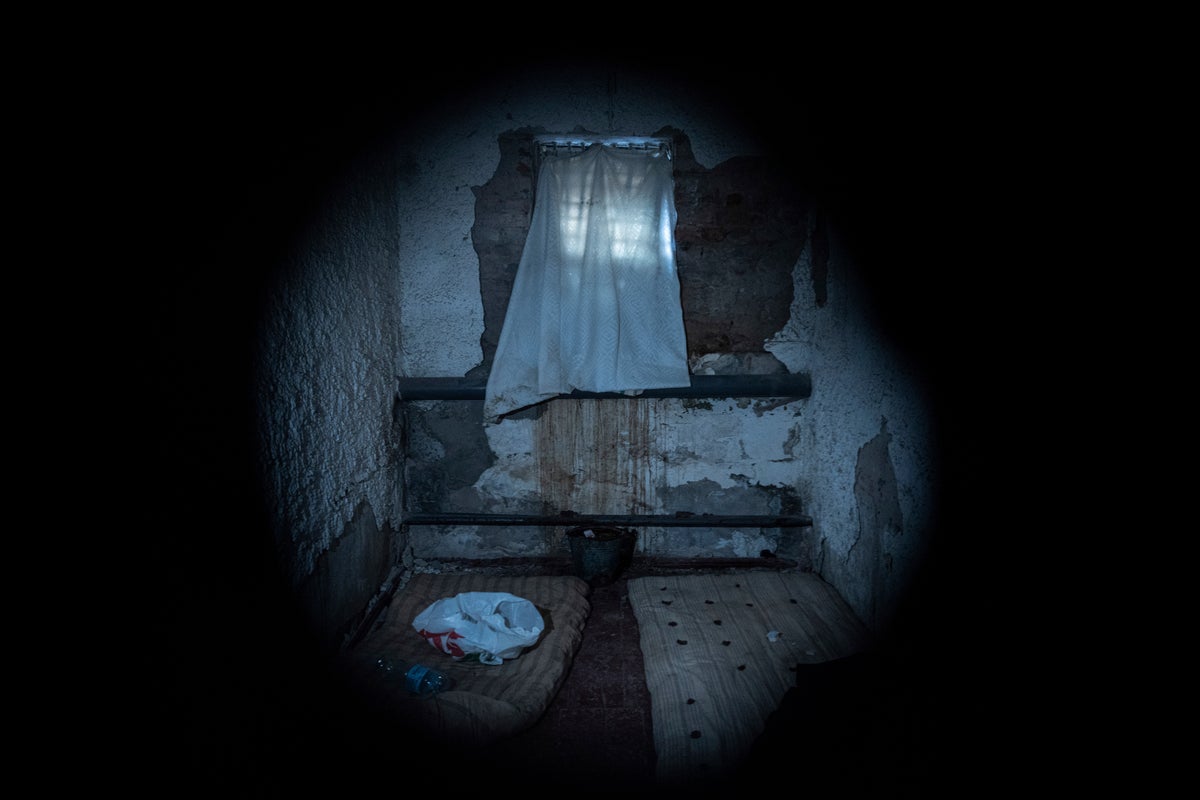
A deep sunless pit with dates carved into the brick wall. A clammy underground jail that reeked of urine and rotting food. A clinic, a police station and a kindergarten.
These were among the 10 Russian torture sites located by Associated Press journalists throughout the Ukrainian city of Izium. Torture in Izium was arbitrary, widespread and absolutely routine for both civilians and soldiers during the six months the Russians controlled the city, an AP investigation has found.
The AP spoke to 15 survivors of Russian torture in the Kharkiv region, as well as two families whose loved ones disappeared into Russian hands. Two of the men were taken repeatedly and abused. One battered, unconscious Ukrainian soldier was displayed to his wife to force her to provide information she simply didn't have.
The AP also confirmed eight men killed under torture in Russian custody, according to survivors and families. All but one were civilians.
At a mass grave site created by the Russians and discovered in the woods of Izium, at least 30 of the 447 bodies recently excavated bore visible marks of torture — bound hands, close gunshot wounds, knife wounds and broken limbs, according to the Kharkiv regional prosecutor’s office. Those injuries corresponded to the descriptions of the pain inflicted upon the survivors.
AP journalists also saw bodies with bound wrists at the mass grave. Amid the trees were hundreds of simple wooden crosses, most marked only with numbers. One said it contained the bodies of 17 Ukrainian soldiers. At least two more mass graves have been found in the town, all heavily mined, authorities said.
A physician who treated hundreds of Izium’s injured during the Russian occupation said people regularly arrived at his emergency room with injuries consistent with torture, including gunshots to their hands and feet, broken bones and severe bruising, and burns. None would explain their wounds, he said.
“Even if people came to the hospital, silence was the norm,” chief Dr. Yuriy Kuznetsov said. He said one soldier came in for treatment for hand injuries, clearly from being cuffed, but the man refused to say what happened.
Men with links to Ukrainian forces were singled out repeatedly, but any adult man risked getting caught up. Matilda Bogner, the head of the U.N. human rights mission in Ukraine, told the AP they had documented “widespread practices of torture or ill-treatment of civilian detainees” by Russian forces and affiliates. Torture of soldiers was also systematic, she said.
Torture in any form during an armed conflict is a war crime under the Geneva Conventions, whether of prisoners of war or civilians.
AP journalists found Andriy Kotsar, 26, a soldier whose unit disbanded in chaos when Russia took over the city, hiding in a monastery in Izium. He had no way to safely contact his loved ones, who thought he was dead. Kotsar was taken and tortured three times by Russian forces, who released him each time because he had no information of use to them.
“They took, I don’t know what exactly, some iron, maybe glass rods, and burned the skin little by little,” he said.
It was also in the spring that the Russians first sought out Mykola Mosyakyn, driving down the rutted dirt roads until they reached the Ukrainian soldier’s fenced cottage. Mosyakyn, 38, had enlisted after the war began, though not in the same unit as Kotsar.
They tossed him into a pit with standing water, handcuffed him and hung him by the restraints.
“They beat me with sticks. They hit me with their hands, they kicked me, they put out cigarettes on me, they pressed matches on me,” he recounted. “They said, ‘Dance,’ but I did not dance. So they shot my feet.”
After three days they dropped him near the hospital with the command: “Tell them you had an accident.”
Mosyakyn was captured again just a few days later. This time, he found himself in School No. 2, subject to routine beatings along with other Ukrainians. AP journalists found a discarded Ukrainian soldier’s jacket in the same blue cell he described in detail. The school also served as a base and field hospital for Russian soldiers, and at least two Ukrainian civilians held there died.
But the soldiers again freed Mosyakyn, only to recapture him yet again and haul him to a crowded garage of a medical clinic. More than a dozen other Ukrainians were jailed with him, soldiers and civilians. Two garages were for men, one for women and a bigger one — the only one with a window — for Russian soldiers.
Women were held in the garage closest to the soldiers’ quarters. Their screams came at night, according to Mosyakyn and Kotsar, who were both held at the clinic at different times. Ukrainian intelligence officials said they were raped regularly.
It was here that Mosyakyn watched Russian soldiers drag out the lifeless bodies of two civilians they’d tortured to death, both from Izium’s Gonkharovka neighborhood.
Ivan Shabelnyk left home with a friend on March 23 to collect pine cones for kindling. They never came back.
Another man taken with them reluctantly told Shabelnyk’s family about the torture they’d all endured together, first in the basement of a nearby house and then in School No. 2. Then he left town.
Their bodies were found in mid-August, in the last days of the occupation, by a man scavenging for firewood. He followed the smell of death to a shallow grave in the forest.
Shabelnyk’s hands were shot, his ribs broken, his face unrecognizable. They identified him by the jacket he wore, from the local grain factory where he worked.
His sister, Olha Zaparozhchenko, showed journalists his grave.
“They tortured civilians at will, like bullies,” she said. “I have only one word: genocide.”
___
Sarah El Deeb contributed from Beirut.







